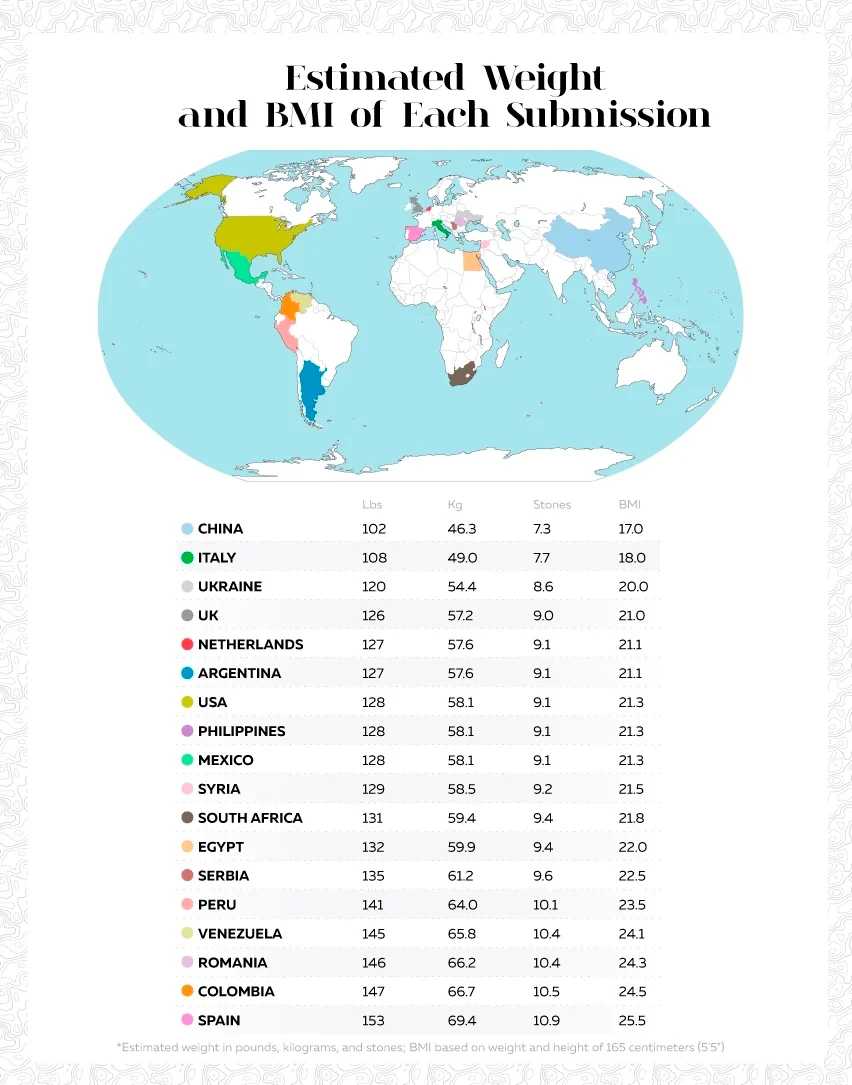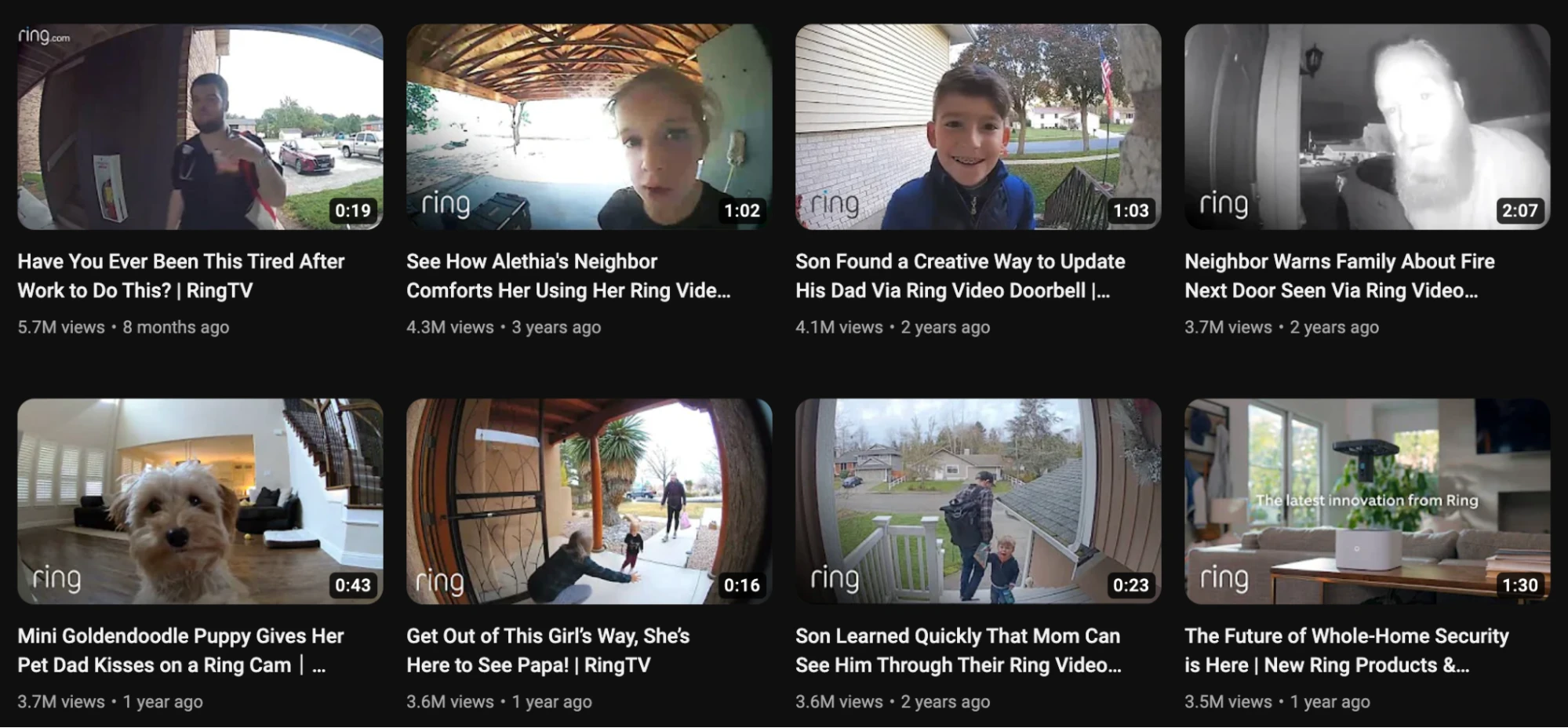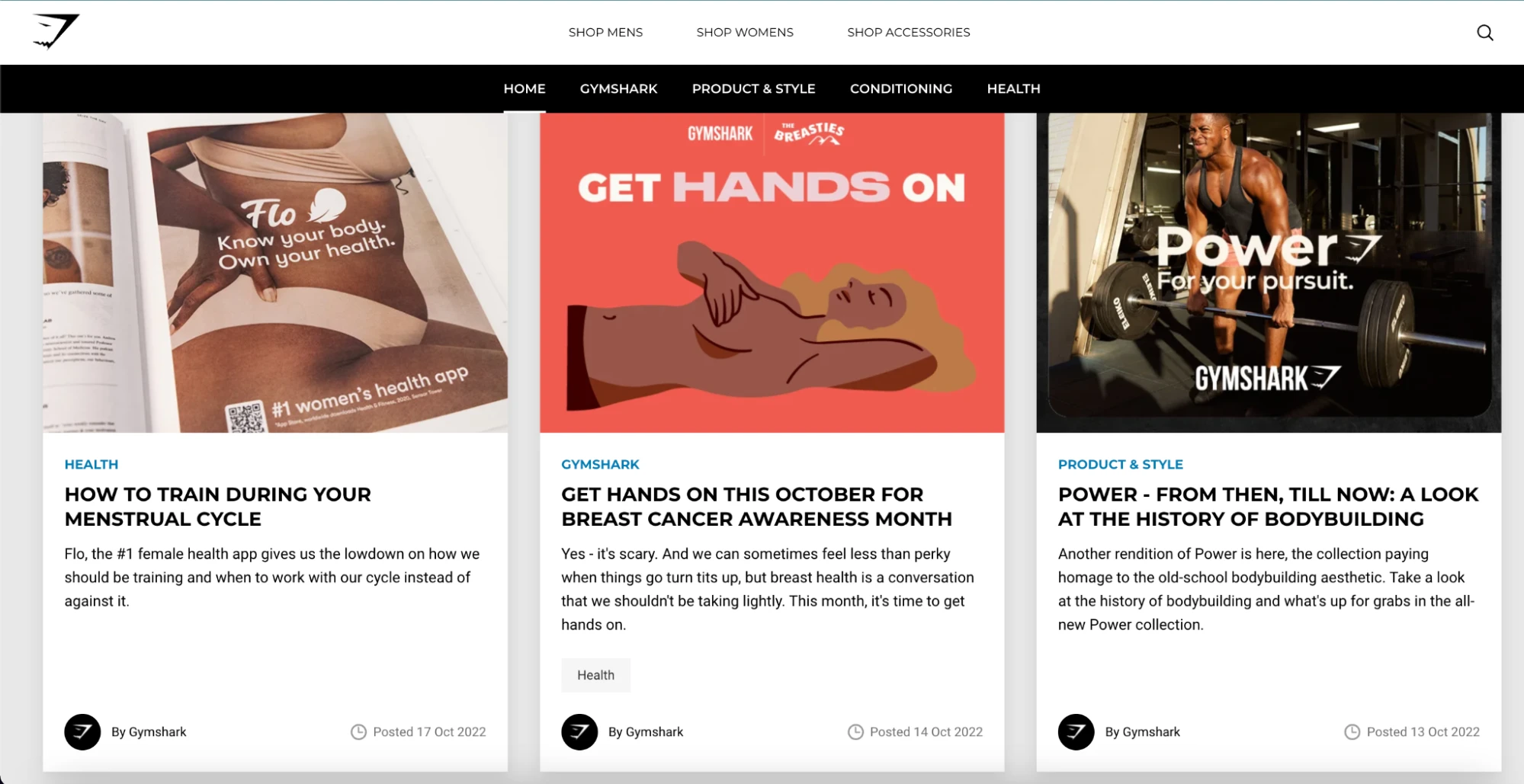We’ve all heard it before – in modern-day marketing, content is king. High-quality content is why many businesses have generated an abundance of customer leads. But when you’re competing with countless stories, it takes an exceptional digital marketing strategy to stand out and connect with your audience; it’s simply not just about SEO.
So, we asked experts to take a look at examples of content marketing and identify the elements that made these successful content marketing campaigns successful. Let’s see what kind of content strategies and qualities draw traffic in.
#1: Superdrug Online Doctor & Fractl
Why they’re successful:
-
Relatable content across the globe
-
Timely & relevant; uses a hot topic (beauty standards, weight) to relate their services
-
Creative & highly interactive

Viral campaign “Perceptions of Perfection” showcases various beauty standards across the globe.
A digital healthcare service in the UK, Superdrug Online Doctor, created the “Perceptions of Perfection” in partnership with Fractl. They asked 18 female graphic designers across the world to photoshop a picture of a woman according to their countries’ beauty standards, and the results were surprisingly diverse.
They then provided an infographic on the average BMI and weight across all countries to determine whether these beauty standards were realistic in each country.

To supplement their campaign, SDOD gathered each country’s BMI to see its correlation to their beauty standards.
This campaign was such a huge success since body image has always been a sensitive yet hot topic around the globe. It is also often tied to not just beauty standards, but also health. Paired with the unique interactive visuals they have created, it comes as no surprise that it was picked up by 600 publishers and even celebrities such as Sofia Vergara.

SDOD provides users with an interactive image on their website.
Nina Marinas, Growth Expert & Marketing Manager, who previously worked for brands like TikTok and Uniqlo, weighed in on this success.
“Consumers expect brands to be more authentic and inclusive in their content today. So, you see marketing teams catching on to this through digital channels,” Marinas told Hire Digital.
What made this campaign a perfect example was the reactions it evoked from its audience. The content showed the different beauty perceptions across the world, which was compelling enough for the audience to talk about.
“This campaign won by highlighting those values by showing real women and celebrating them in different shapes, sizes, and color. Challenging people’s localized perceptions of beauty added to its talkability. Because of its global appeal, it instantly casted a wider net of relatability that helped its virality,” she added.
Lastly, the use of infographics come a long way in conveying authentic key messages. As such, it is a content marketing element that can drive the message better and evoke a connection from an audience. Infographics are fairly easy to create, especially with the tools available to easily design them.
#2: Rolex
Why they’re successful:
-
Personalized & diverse content in each digital channel
-
Provides a variety of human interest stories about brand-relevant people
-
The brand connects with consumers through its authentic history
-
Consistent branding and messaging

Rolex’s official website tells human interest stories and its history.
Rolex’s content marketing efforts have been consistently outstanding. For one, they provide different content in each social media channel, depending on the audience per platform.
For instance, they post about their celebrity endorsers’ accomplishments on their Facebook page, while their LinkedIn is populated with videos of professional insights and the company’s internal production.

Rolex supports Roger Federer on their Facebook Page.
Meanwhile, their Instagram is filled with sleek, high-quality product photos, qualities of which are akin to their products. Each social media content is designed to connect with their different target audiences.

Rolex’s Instagram feed showcases product photos
Second, Rolex uses storytelling to evoke a connection with its market. Although it is a luxurious brand, its website gives you access to personal stories, history, memories, and accomplishments. They tell stories that drive not only connection but also inspiration.
Carl Cuevas, a Marketing Strategist who worked for organizations like Unionbank and Weber Shandwick, shared his thoughts with Hire Digital.
“Human interest stories, especially those that evoke emotions, are a universal language regardless of what the brand sells. As long as the company is consistent with their brand DNA, and has the right emotional beat in their campaigns, they can connect with their audience,” Cuevas told us.
Rolex has in fact been consistent with its brand messaging throughout the years. They have always portrayed their customers to be world achievers and leaders.

Rolex showcases the same theme/branding across its content.
Despite the digital transformation and marketing evolution that occurred over the years, Rolex never lost sight of its vision and values, which gives them a strong sense of its unique value proposition, brand story, and target market.
#3: Ring
Why they’re successful:
-
Showcased interactive content from their consumers
-
Real-to-life stories from their product footage
-
Utilizes user-generated content via video marketing
-
Built a community around the use of their product

Ring Doorbell’s Youtube channel is populated with viral video content from their consumers’ video footage.
Strategy Analytics identified Ring Doorbell as the top video doorbell brand globally, having sold over 1.7 million doorbells in 2021. This could partly be due to user-generated video series.
Their Facebook and Youtube channels, for example, are filled with highly shared videos from their users’ ring doorbell footage – from adorable kids talking to their neighbors/parents via Ring Doorbell, giant bears climbing in front of houses, to veterans reuniting after 40 years.
What makes their content work for them is its authenticity; its great product demonstration is not at the forefront, but rather, the moments shared. Their emotion-igniting content has built a community of people exchanging their Ring Doorbell experiences across various locations.
#4: GymShark
Why they’re successful:
-
Integrated their brand into their consumers’ lifestyle
-
A customer-centric approach throughout each piece of content
-
Strong & relatable brand philosophy/identity

GymShark’s Pinterest showcases its famous “Stay Humble” tagline.
GymShark started out as a small supplements company in the UK. Now, it sells fitness apparel across 131 countries around the world with a billion-figure valuation.
Part of what makes it such a success is how it identified its niche market in the oversaturated fitness community – 18 to 25-year-olds interested in fitness, music, and fashion. Their consumers not only believed in their products but also in their philosophy of “staying humble”. In fact, the #StayHumble hashtag has enabled a lot of user-generated content on Instagram.
“Customers now are more complex. They do not just buy your product but buy into the brand. What lifestyle does your brand represent?” said Marinas.
GymShark is known to have a customer-first approach, giving more focus on their small niche’s satisfaction. This shows in their own content, from written content like blogs and newsletters to audio/visual content like workout videos, Spotify playlists, and podcasts.

GymShark’s Spotify profile has over 79,000 followers.
Gymshark’s blog builds next-level brand awareness on various fitness and health-related topics that engage their niche, while their Instagram account consists of relatable gym reels. They have also created playlists of fitness influencers and celebrities their audience can listen to during workouts.
“Gym Shark hit the nail on the head by pinpointing its target market and its specific range of interests. By expanding their messaging besides their product features and into their customer lifestyle, they are ever present in their customers’ lives, down to their music consumption. This helps reinforce brand recall and cultivate brand love,” Marinas added.

GymShark’s website content shares valuable information with its target market.
In short, they create content for their customer’s benefit, not for product promotion. Their vision is to build and engage a community, which evidently translates across all their marketing channels.
#5: Paypal
Why they’re successful:
-
Content showcases their products and services’ social impact
-
Strong ethically relevant content
-
Emotionally evocative

A curation of Paypal’s stories.
One of the ways Paypal gains organic traffic and leads is through their newsroom content. When you visit their stories section, you can see how Paypal can connect with their existing and potential customers, especially small business owners. They use content marketing to poise themselves as industry thought leader.
“Marketing for financial products and services may risk coming off as cold and detached. Therefore, it’s important for financial companies to elevate their brand positioning, and demonstrate how their products and services empower their customers and impact the general community,” Cuevas said.
Paypal writes stories about relatable or relevant financial topics – from economic equality for women across the globe, a local entrepreneur helping residents to safely kayak with their dogs through touchless payment, to case studies that highlight how their services enable accessible payments across the world.


PayPal shows its support for women through various content.
“Your audience is everything. Your content objective should always be to engage that audience by addressing their needs and issues. I feel engagement comes first, before thinking about financial results,” Paypal Partner Marketing Manager Bob Angus says in an interview with Upland.
“In fact, content on its own usually does not directly produce revenues. Financial results are achieved only when you combine engaging content with great customer service to support a great product or service. Content is just one part of the success,” he adds.
Why Content Marketing Is Important: Even Stats Tell Us So!
Still not convinced by the success stories above? Let the stats speak for themselves.
According to the Content Marketing Institute, 97% of businesses include content marketing in their strategies, and over two-thirds of marketers report that it generated demand and leads for them.
Content marketing enables audiences to organically become interested in products through valuable content. If the content is relevant to the target market, they would find enough helpful insights to pique their interest in the marketer’s products or services.
Lastly, 64% of the most successful B2B marketers possess a documented content marketing strategy as well.
B2B businesses’ value per customer is much higher since they can’t sell on a massive scale like B2C businesses. Hence, B2B content marketing and building a relationship with their consumers is paramount to get a loyal customer base. Instead of running disruptive ads, they churn out content their customers care about.
Read more:
